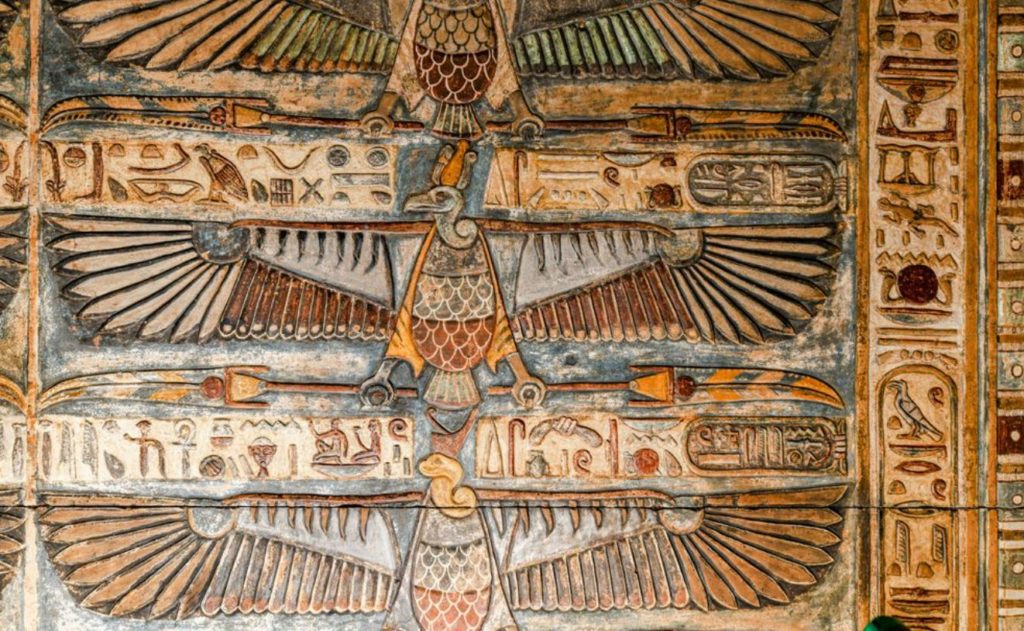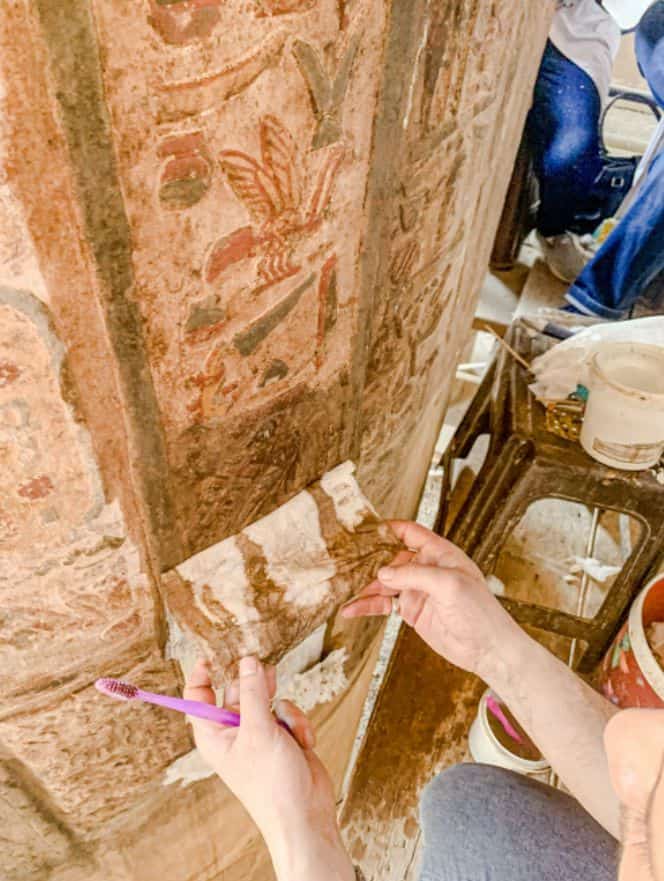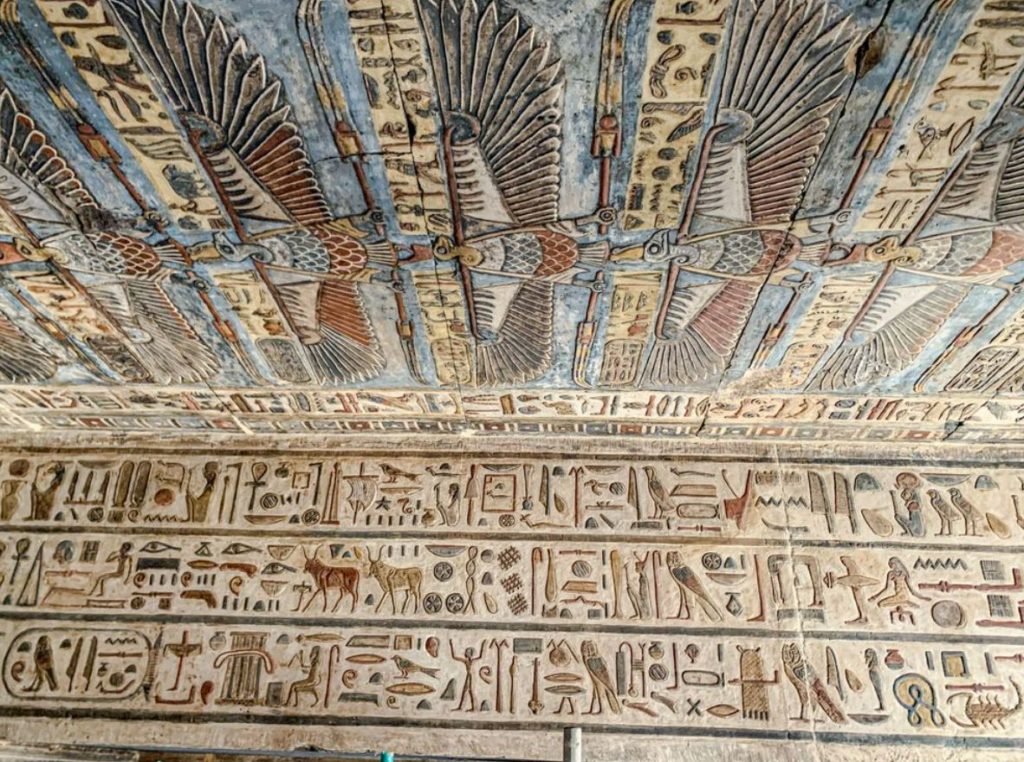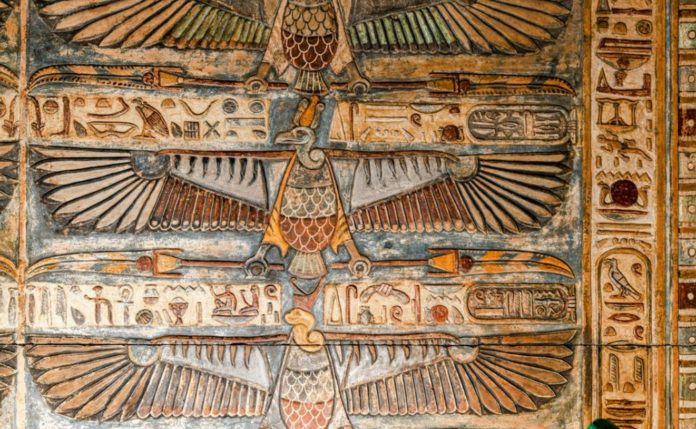These vibrantly colored ceiling frescoes were discovered by German and Egyptian scholars in the Temple of Khnum in Esna, Upper Egypt.
Professor Christian Leitz from the University of Tübingen says that the reliefs in the middle of the ceiling show 46 images of the Upper-Egyptian vulture goddess Nekhbet and the Lower-Egyptian snake goddess Wadjet.
Both have outspread wings and are represented as vultures. Wadjet is distinguished by the Lower Egyptian crown capped with a cobra, while Nekhbet has a vulture’s head and the white crown of Upper Egypt.

Since 2018, researchers from the University of Tübingen’s Institute for Ancient Near Eastern Studies and the Egyptian Ministry of Tourism and Antiquities (headed by Dr. Hisham el-Leithy) have been working to re-color the reliefs, paintings, and inscriptions in the temple.
“Temples and ancient depictions of the gods were often painted in brilliant colors,” adds Leitz, “but these have usually faded or even disappeared totally as a result of external influences.” The colors in the Temple of Khnum at Esna have been covered in dirt and soot for about 2000 years, which has helped to preserve them.
Experts were previously unaware of the beauty of the color employed in portrayals of the “Two Ladies,” Nekhbet and Wadjet, which has now been disclosed.

“From the 1950s, the French Egyptologist Serge Sauneron systematically documented the Temple of Khnum at Esna and the paintings that were visible at that time,” adds Tübingen scientist Dr. Daniel von Recklinghausen, “The temple’s complete range of images is unique in its wealth of figures and the state of preservation of the colors.”
A crew led by Ahmed Emam has cleaned, conserved, and recorded more than half of the ceilings and eight of the 18 columns. In addition, the middle section of the ceiling’s two architraves – horizontal beams that support the superstructure – have been cleaned of soot.
“For the first time we can see all the decorative elements in relation to one another,” adds Christian Leitz. “This was impossible simply with Sauneron’s publication.”
The Tübingen Egyptologist is currently planning a translation of all the Esna inscriptions, due to a big project supported by the German Research Foundation (DFG), and is also researching the relationships between the many inscriptions and the pictures in the temple’s interior.
Only the vestibule (known as a “pronaos”) of the temple at Esna, 60 kilometers south of Luxor, survives, but it is complete: measuring 37 meters in length, 20 meters in width, and 15 meters in height, the sandstone structure was built before the actual temple no later than the time of the Roman Emperor Claudius (41–54 CE), and it may have overshadowed it.

Because of its central location, the vestibule was conserved and, unlike other buildings, was not used as a source of stone for construction during Egypt’s industrialization.
The pronaos garnered considerable attention in specialized circles as early as Napoleon’s time, as it was regarded as the ideal of Ancient Egyptian temple design.
Image Credit: Ahmed Amin / MoTA
You were reading: Breathtaking Frescoes of Goddesses Nekhbet and Wadjet Uncovered in Egypt
